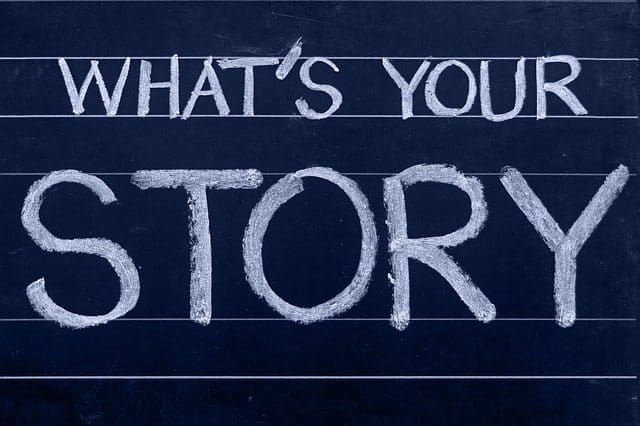 If you are a CEO or marketer in a B2B company and you think that storytelling doesn’t play an important part in your marketing strategy, think again. Good storytelling is by no means, restricted to the B2C world. While the themes and characters will be different, a good story can be just as compelling for an IT manager looking for a new technology supplier, as it is for a consumer who wants to buy a new pair of shoes.
If you are a CEO or marketer in a B2B company and you think that storytelling doesn’t play an important part in your marketing strategy, think again. Good storytelling is by no means, restricted to the B2C world. While the themes and characters will be different, a good story can be just as compelling for an IT manager looking for a new technology supplier, as it is for a consumer who wants to buy a new pair of shoes.
But how exactly can a B2B company create a story that will engage potential customers? Check out these simple tips to help you get started on creating your company’s B2B story.
Make sure your story has a point
How many times have you watched a movie only to say to yourself, “What was the point of that?” That shouldn’t happen. Great stories should never leave the audience scratching their heads and wondering what just happened and worse, why they wasted their time. Your story needs to have a point and you need to stay on that point throughout the story.
What type of story should you tell?
- The Founder’s Story: Sharing why and how your company founder began the organization not only personalizes your business but shows how the founder saw a need and set out to address that need.
- Customer Stories: Customers can and should be advocates of your business. Talk to your clients, see how your product or service has helped them. Use these testimonials as a launch pad for a compelling story. These stories are ‘real life’ examples of how your organization helped someone struggling with a similar problem that your potential customer may be struggling with.
- Staff Stories: Every employee has a story to tell. And I mean every employee. From your receptionist to the members of your sales team. Everyone has a story to share about how your company’s product or service has helped make a client’s life better or easier. To find these stories, all you have to do is ask.
Using your buyer persona is a great way to decide which story will have the greatest impact on your prospective customers.
Now you have a story to tell. Next up is making that story into a compelling piece of content that will captivate your audience. To help make that happen, make sure to add in the following:
Add a dash of emotion
Just like the B2C world, B2B purchases are driven by emotions, not just by logic, testing, and facts. How a person feels about your company typically determines whether they buy your product. A brand is a matter of perception. When you tell a story that embodies human challenges, you create an experience that resonates with your customers.
Emotions come in kinds
When using a story to connect on an emotional level with your customers, remember that emotions come in kinds: good and bad. Using negative emotions or fears may seem counterproductive but these fears and challenges are real to your prospective customer and your product or solution can help them.
Now addressing those pain points doesn’t mean you just spend time listing the features and benefits of your products or services. Instead, use your story to help your potential customer find solutions to their challenges and pain points. When that happens you will not only gain a satisfied client but a new story to tell.
Paint a picture
The most effective stories are visual. And by visual I don’t mean charts and grafts. Use your words to paint a picture to help potential clients ‘see’ how you can help. Share specific examples of how your product or service has helped others. Use engaging words to drive your point home. But, be careful to remember you aren’t creating a Hollywood script, your story should be succinct as well as engaging.
Make sure to share
Once your story or stories are created don’t keep them locked up, only to be taken out like the good china during holidays. Smart B2B organizations understand the importance of empowering their employees to engage and share company stories in a way that fits your company model- whether that’s on social media or personal blogs. And it’s not just sales and marketing that should be in on spreading the word – everyone from customer service to human resources and programmers should be willing and able to share.
Test it
No matter how much planning you put into your story nothing beats a road test. Make sure you tell your story to several people or groups who will give you honest feedback. When you do make sure you note your audience’s reaction (or lack of reaction) when you have that feedback it’s time to take your story live or go back to the drawing board.
Stories can be incorporated into all your forms of content: blogs, social media, e-books, whitepapers, and even your “About us” page to captivate your audience. Once you learn to tell a good story, your audience is always going to be wanting more, which will turn your readers into leads, your leads into customers, and your customers into loyal customers.





